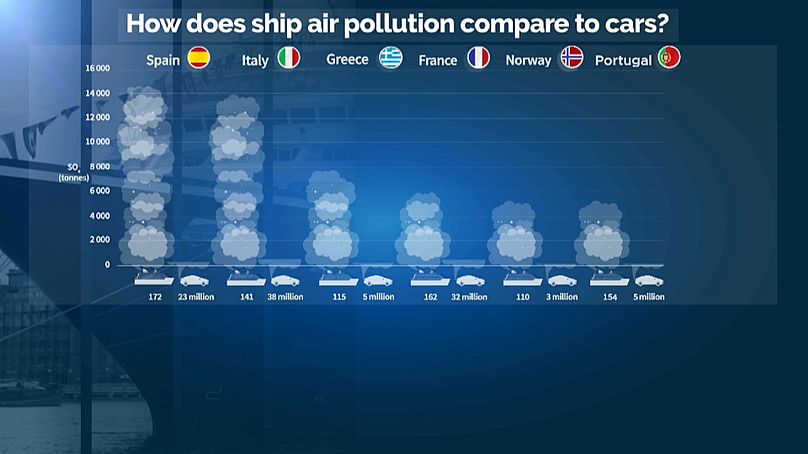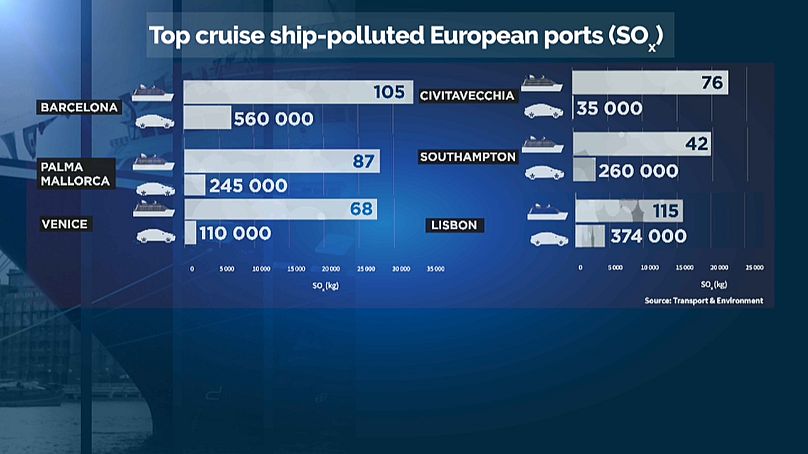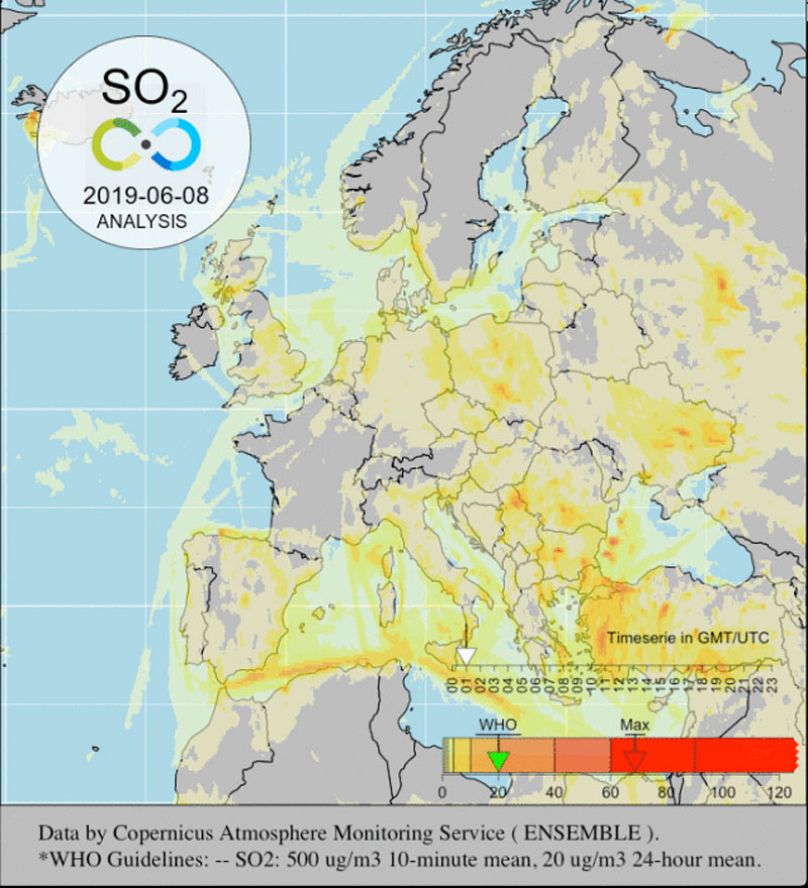Cruise brands run by Carnival Corporation emitted nearly 10 times more sulphur oxide air pollution around European coasts than all of the continent's 260 million cars in 2017, a new analysis has claimed.
Cruise liners run by the Carnival Corporation emitted nearly 10 times more sulphur oxide (SOX) air pollution around European coasts than all of the continent's 260 million cars in 2017, a new analysis has claimed.
Spain, Italy, Greece, France and Norway were most exposed to cruise ship air pollution in Europe, the analysis by campaign group Transport & Environment said.
Among the major cruise ports, the report said Europe's top 10 cities that were most exposed to the pollution were: Barcelona (Spain), Palma de Maiorca (Spain), Venise (Italy), Civitavecchia (Italy), Southampton (UK), Lisbon (Portugal), Santa Cruz de Tenerife (Spain), Marseille (France), and Kobenhavns Havn (Denmark).
The report analysed 203 cruise ships that sailed according to ship automated identification system (AIS) in the exclusive economic zone (EEZ) of European countries in 2017 looking at the air pollution they caused, including sulphur oxide.
It found seven of the 20 most polluting cruise ship lines were operated by brands owned by Carnival.
According to the Exhaust Gas Cleaning System's Association, 95% of the SOX emitted from the combustion of fossil fuel is sulphur dioxide, which the UK's Health Protection Agency classified as "toxic and corrosive" in a general information notice.
"Breathing in sulphur dioxide causes irritation of the nose and throat," the HPA, now part of Public Health England, wrote. "Exposure to higher concentrations can cause nausea, vomiting, stomach pain and corrosive damage to the airways and lungs."
The organisation said children may be more sensitive to the effects of sulphur dioxide, but the effect on unborn children was unknown.
It added: "Due to the lack of human data and the limited data in animals, the International Agency for Research on Cancer (IARC) determined that it is not known whether sulphur dioxide causes cancer."
When it came to nitrogen oxide (NOX) emissions, cruise ships were also "of great concern", the report said.
A Carnival Corporation spokesperson said in a statement it "strongly refutes the conclusions from the Transportation & Environment (T&E) report as being inaccurate, misleading and irrelevant," adding it was an "apples vs. oranges comparison between automobiles and ships".
It also said the report does not take into account that it is "well-accepted among regulatory groups such as the International Maritime Organization and the U.S. Environmental Protection Agency that we have implemented several advanced technologies that remove the vast majority and sometimes all of the sulphur from exhaust, resulting in extremely clean air emissions".
It added that Carnival Corporation operates with "close to zero sulphur emissions (an average of 0.05% or from 0-60 ppm) in most extensive European operations, with further reductions planned".
Responding to that, Faig Abbasov, shipping policy manager at T&E, told Euronews that they use an "open methodology, approved by the International Maritime Organisation in its 3rd GHG study (2014) and all our methodological assumption is published in the study.
Abbasov went on: "The result of our estimations already took account of the 0.1% sulphur standard in European ports and the Sulphur Emissions Control Areas (SECAs) and associated EGCS use. FYI: 0.1% is already 100 times worse than the road standard, which partially explains the staggering results."
The T&E report also advocated that Europe should implement a zero-emission port standard as soon as possible, this could then be extended to other ship types.
The report also recommends extending emission control areas (ECAs), currently in place only in the North and Baltic Seas and English Channel, to the rest of the European seas.
"Luxury cruise ships are floating cities powered by some of the dirtiest fuel possible," said Abbasov.
"Cities are rightly banning dirty diesel cars but they’re giving a free pass to cruise companies that spew out toxic fumes that do immeasurable harm both to those on board and on nearby shores. This is unacceptable."














